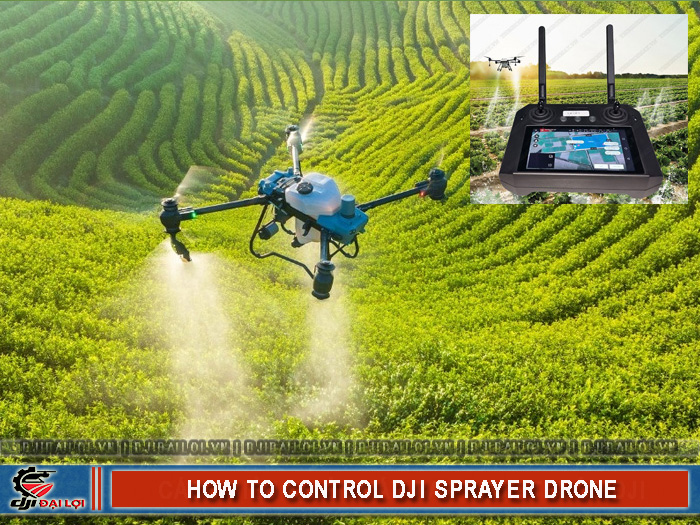
Many people assume that simply turning on the drone and using a remote controller is enough. However, this misconception carries serious risks. Misoperation can cause equipment damage, pesticide waste, and even danger to people and the environment. Understanding the correct operational techniques is crucial for both safety and efficiency.
One major benefit of correct operation is that it ensures your DJI crop spraying drone runs smoothly and precisely. These drones can automatically adjust altitude, speed, and spray volume via onboard sensors-but only if properly configured and handled. Failing to react appropriately to emergencies such as signal loss, low battery, or sudden wind can result in crashes or flyaways.
From an agricultural perspective, precise control ensures even spraying, minimizes waste, and prevents over- or under-application. Studies in China have shown that using drones can save up to 30% on pesticide volume while reducing farmers’ exposure to chemicals by 90%.
Therefore, learning the right way to operate a crop spraying drone is not just about technique-it’s also about economics and safety.
Before flying, ensure readiness in four key aspects: equipment, skills, environment, and legal compliance. These foundations are essential for safe and efficient drone operation.
Proper preparation guarantees safety, minimizes errors, and maximizes drone efficiency from the very first flight.
Beginners often find agricultural drones complex due to the multiple settings and controls. The following step-by-step process simplifies how to operate a DJI crop spraying drone safely and effectively.
Place the drone on a flat surface. Inspect propellers, radar, tank, and all connectors. Ensure full battery charge and no debris. The flight zone should be open, free from power lines or tall obstacles within a 30 m radius.
Power on both the controller and drone, connect via the DJI Agras app, and verify battery level, GPS, and signal strength. Update firmware if prompted. The system will automatically run diagnostics and display any errors.
Select “Spraying Mode” → create a field map via GPS or manually → set flight speed (3–5 m/s), altitude (2–4 m depending on crop), spray rate (L/ha), and pattern (single or double). Save the route for future use.
Verify weather, battery, spray volume, and visibility. Tap “Ready,” and once “Safe to Fly” appears, launch using “Auto.” Closely observe the drone for the first 10 seconds to ensure it follows the intended route.
Keep visual contact. Monitor spray flow, remaining battery, and flight time. Reduce speed in strong winds. If you notice uneven coverage, command the drone to re-spray or switch to manual mode for localized spraying.
Once complete, the drone will automatically return and land, but manual control is recommended to avoid obstacles. After landing, power off, remove the battery, drain leftover liquid, and clean the nozzles and sprayer with fresh water.
Note: Never operate when the signal is weak, unprotected personnel are nearby, or in proximity to high-voltage power lines.
Most drone incidents stem not from mechanical failure but from human error. Neglecting pre-flight checks can result in losses worth thousands of dollars. Common mistakes in operating crop spraying drones include:
Avoiding these mistakes is key to ensuring long-term safe and efficient DJI drone operation.
How can you tell if you’re flying correctly? These real-world indicators help assess whether your drone spraying operation is optimized:
These metrics help evaluate and improve future spraying drone performance.
Even experienced pilots can improve results with these expert-tested tips from professional farming cooperatives in Vietnam:
Applying these best practices enhances crop spraying drone operation, especially for large-scale or professional users.
Mastering how to operate a crop spraying drone not only boosts spraying efficiency but also ensures safety and prolongs equipment lifespan. It’s an essential skill for farmers, cooperatives, and agricultural service providers seeking sustainable production.
In Vietnam, large-scale or sensitive-area operations may require certification from authorized agencies, particularly in provinces with specific drone regulations.
You can enroll in official DJI training centers or join professional agricultural cooperatives offering drone operation courses.
Some DJI Agras models have navigation lights, but nighttime spraying is not recommended due to poor visibility and higher accident risk.
Yes. Modern drones can automatically adjust altitude based on terrain. However, operating on slopes requires experience in route planning and obstacle avoidance.
Perform maintenance every 50–70 flight hours. Clean nozzles, inspect batteries, update software, and recalibrate sensors to maintain consistent drone spraying performance.